A few days ago, we posted an a short article showing how Oscar hacked a VGA cable to make a binocular ferrite core for his homebrew NCPL/Youloop antenna. Many thanks to SWLing Post contributor, Grayhat, who explored this clever hack a little further:
Hi Thomas, Having some time in my hands Sunday afternoon I decided to try pulling out the ferrite chokes from a VGA cable I had around, and while doing so, I decided to coarsely document the process with some pics.
The first thing to do is use a cutter to carefully cut around the “washer” shaped plastic at the connector end of the choke (fig.1, #1,#2, #3 above), then on the same side, after cutting the plastic also cut the inner conductors (fig.1, #1).
Move to the other side of the choke, gently cut around the “washer” w/o cutting the inner conductors, now pull the cable to extract it from the choke (fig.1, #3), repeat the process for the other choke.
Now look at the “cans” containing the chokes, one side of those will show a “cap” (fig.1, #4), insert a small screwdriver into the center hole and gently ply to one side to raise the cap and extract it (fig.2, #1).
The result will be as in fig.2, where #1 is the closing cap, #2 is the ferrite choke and #3 is the “can” containing the choke. Repeat the process and you’ll have two ferrite chokes as shown in fig.3 (the VGA connector is there to give an idea of the dimensions):
At this point, use some tape (duct tape will be a better idea, I used clear tape just to make an example) to tie the two ferrites together as in fig.4 and you’ll have your “binocular ferrite”:
Willing to use whatever you have there to wind the transformer, you may now extract the tiny insulated wires from the VGA cable (fig.1, #3, see wires) and use them for the windings.
Notice that other cables may use different choke “cans” which may need to cut a larger portion around the flat faces at the ends. But remember that in any case, those are just “snap-in” cans containing the ferrites, so with a bit of attention and patience, it shouldn’t be difficult extracting the ferrites.
Based on a little online research, it sounds like the ferrites used to choke the VGA cables (HDMI ones too) are generally type #31.
Looking at some #31 datasheets it appears that while #73 is works fine at frequencies below 50MHz, the #31 is best suited for the 1-300MHz range.
This means that #31 won’t be the best pick for mediumwave, although if one doesn’t have another choice… well, go for that! Also notice that the ferrite permeability is different:1500 for #31 and 2500 for #73. This means that we’ll need to increase the number of windings to achieve acceptable signal transfer, otherwise the transformer loss will make our antenna deaf.
One might try increasing the number of windings to say 8:8 or 16:16; as long as the winding
ratio will remain the same, there won’t be problems (although the resulting bandwidth will become narrower).
Thanks for documenting and sharing this, Grayhat! Since most of us have more time on our hands at home, I think it would be worth experimenting with the number of windings to see how it affects the antenna performance. That’s a clever thought, too, to use the VGA wires to wind the Balun. As long as the cable is long enough for the amount of turns, it’s certainly the most efficient use of resources!

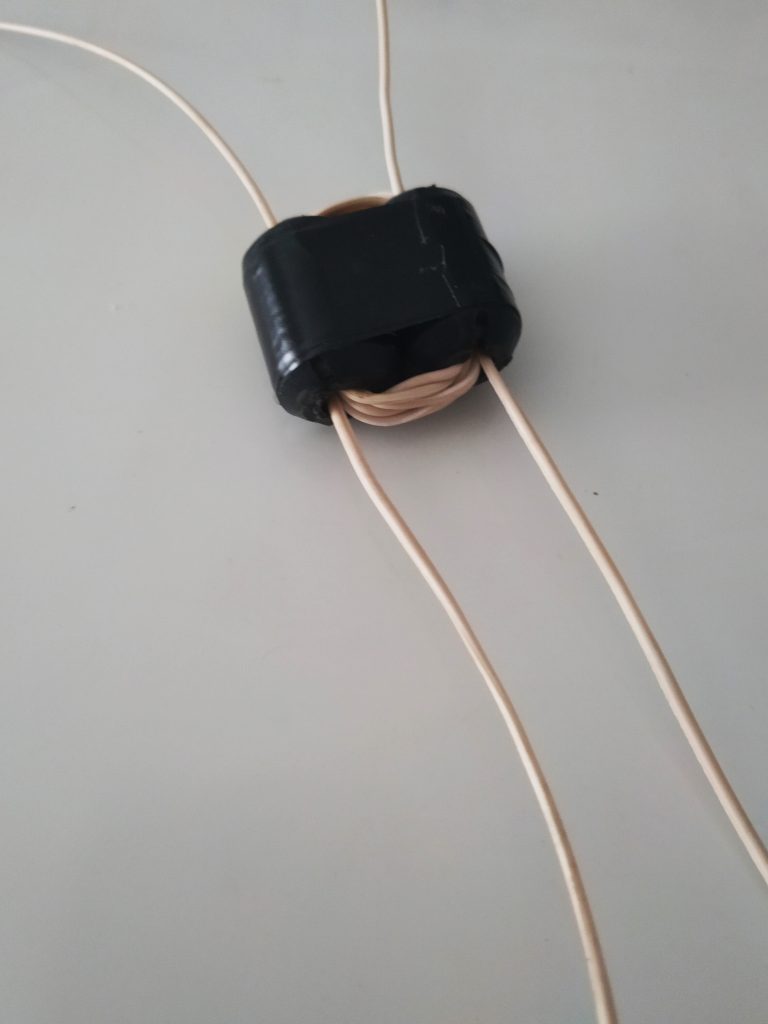
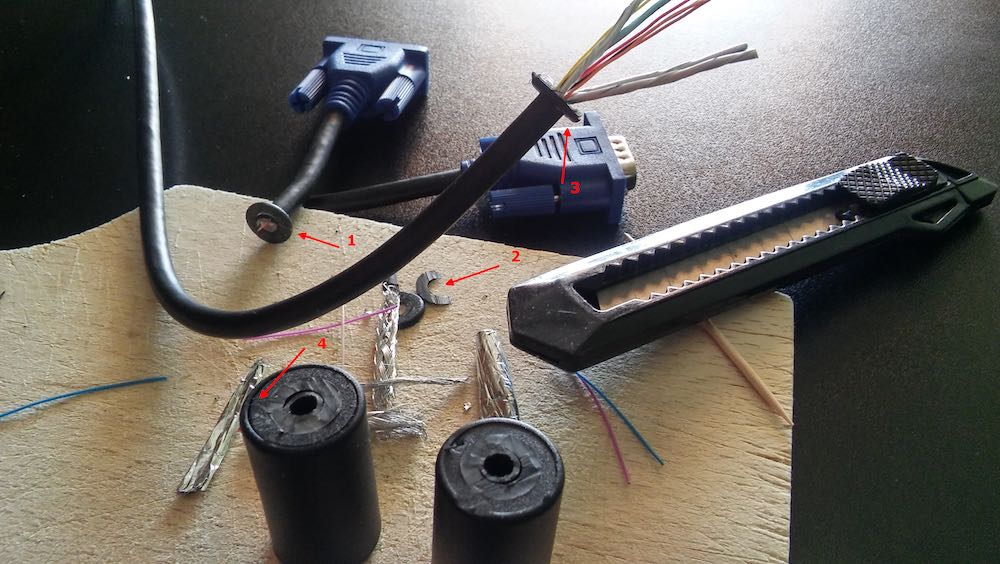
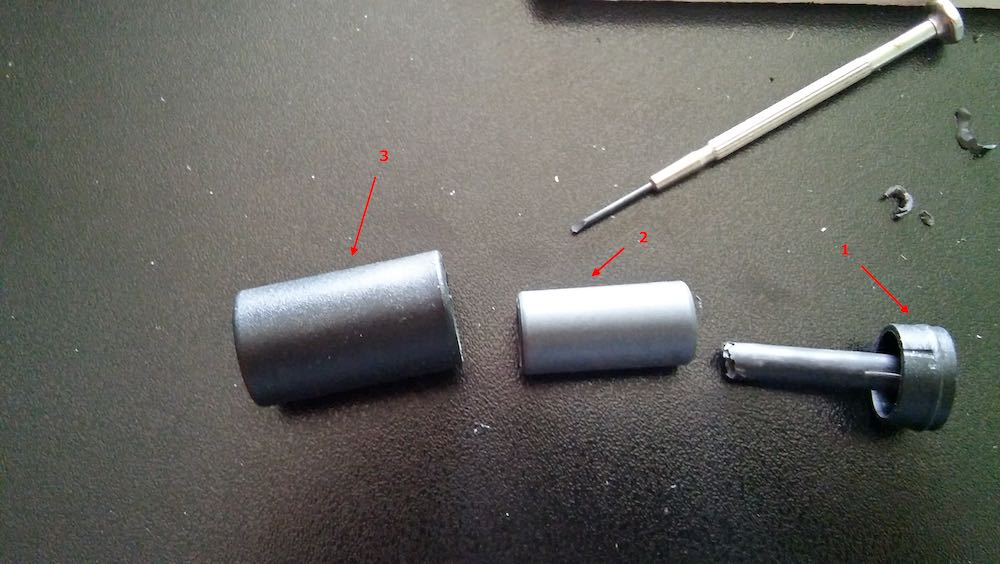
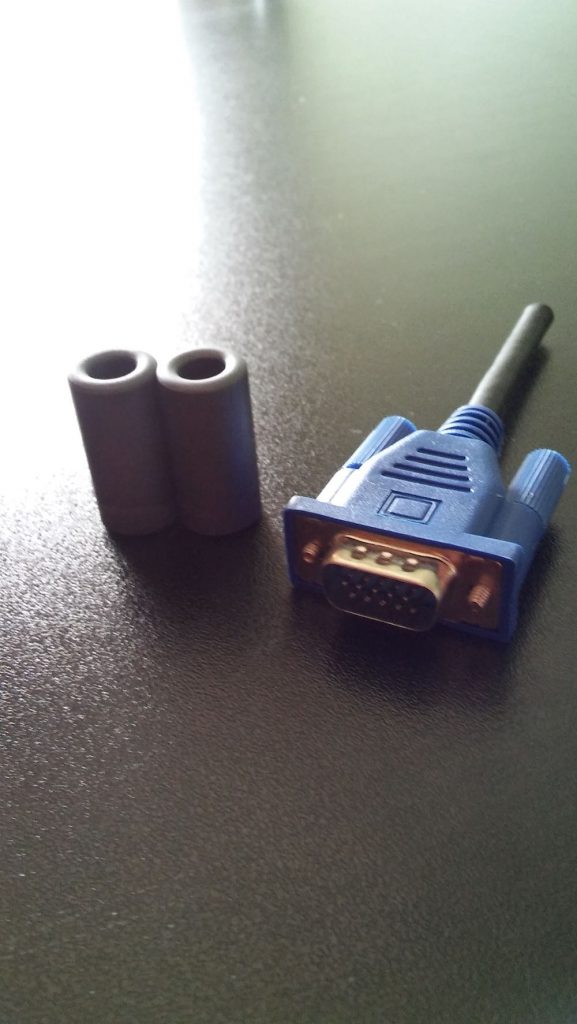
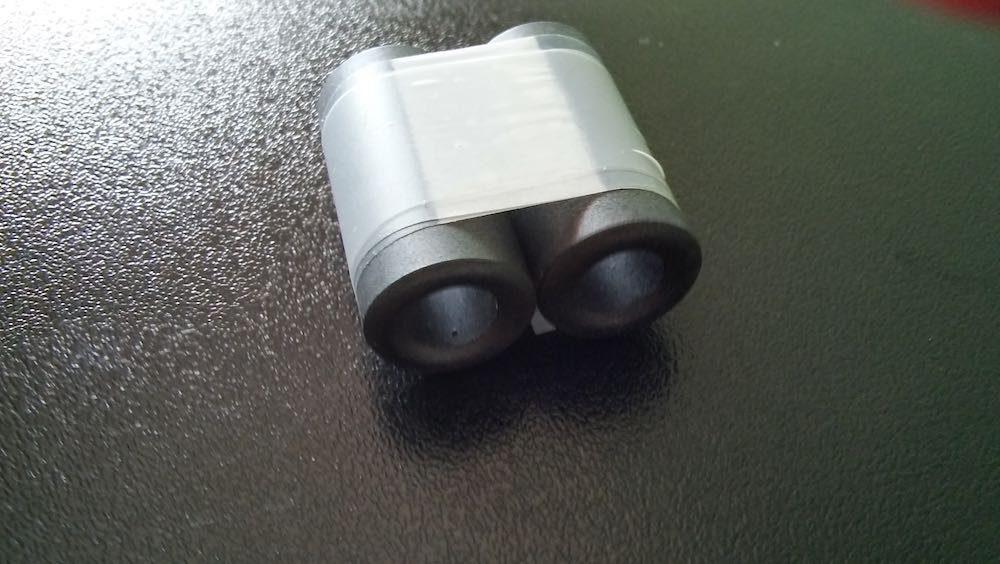
For a common-mode yoke, it is most important that you use ferrite material, nor iron powder cores. For shortwave and up, the type of ferrite material hardly matters. You should even prefer lossy materials as this dampens any resonances that might exist.
Do not use too many turns as this lowers the self-resonance frequency of the system. Above this frequency the impedance lowers again! If you work on a medium-wave system, use all turns you can put through the aperture. above 50 MHz I would only do 2-3 turns.
BTW: Those cores you get in halves are convenient to mount, but are of no use below VHF: A permeability of 2000 means that the magnetic conductivity is 2000 times as good as that of air. When you press the halves together, you still have two air gaps!
Alexander (DL4NO), I agree with you… except for one point, see, winding too much turns would compromise the performance of a wideband transformer, which is exactly what we’re dealing with; the idea in this case is to “hack” a homemade binocular core to be used with the NCPL antenna described by Thomas, so I thought I’d better add a bit of warning about the fact that, since the cores used for VGA cable chokes are usually #31 material, the performances of a transformer built using those cores won’t be the same as the ones of the same transformer using the more suitable #73 material, nothing else 🙂
As for the snap-on chokes, I agree with you, but then I believe they’re still useful, see, more often than not USB cables used with SDR units have no built-in chokes, and this often means that they pick up noise from the computer or nearby equipment, so even if not so efficient, the snap-on chokes may still be of help
What else… oh yes, as for winding transformers, I believe that the considerations presented here
https://www.robkalmeijer.nl/techniek/electronica/radiotechniek/hambladen/qst/1988/12/page33/index.html
even if directed at toroids, may be of interest to some of the readers 🙂
When winding on a binocular core, remember that each time the two ends of the wire exit from one side, you wound ONE turn, not a half one; so the first “U” is one turn, then when you pass back the two ends to the other side that’s TWO turns, and willing to make an half turn, just pass through one end of the wire and not the other; if ratio is 1:1 just wind the same number of turns for both windings, otherwise use the square root “law”, for example for a 9:1 winding, sqrt(9)=3 so the turns ratio will be 3:1 which means, for example, 6 turns on one side and two turns on the other (6/2 = 3), increasing the number of turns will increase efficiency but decrease bandwidth (Q factor)